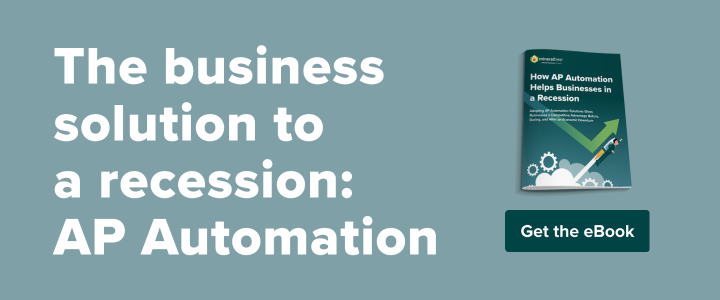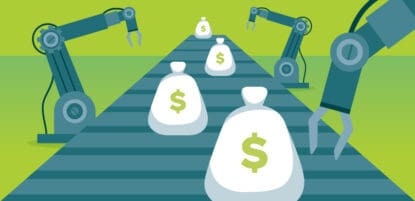As technology evolves and processes become digitized, the future of accounts payable and the accounting profession will certainly shift. Innovations like AP automation solutions, e-payments, and virtual cards will become must-haves. In this article, we will explore predictions for the future of AP and how customers can leverage MineralTree to future-proof their business.
The last few years have drastically shifted business in terms of how they operate and how they engage with consumers. Accounts payable is no exception in this shift to digital. Below are 5 ways accounts payable will change.
1. Technology Will Allow Companies to Scale While Minimizing Costs
While smaller businesses may still get away with manual AP processes, desk-level decision-making, and handling paper checks, these processes don’t scale up easily. According to a recent Institute of Finance & Management (IOFM) survey of AP leaders, invoice volume is rising, as is invoice size.
Handling this growing workload either requires hiring more staff or investing in technology. However, hiring the right team can be a costly and time-consuming endeavor. Opting to expand the team will also further increase costs down the road, since this trend in invoice volume is expected to continue. On top of that, wages for existing staff are expected to increase in 2022. Nearly 4% of payroll budgets are being set aside to account for raises — this increase in salaries has not been seen in nearly a decade. Not only is it difficult to hire more people, it is also getting more expensive.
Technology, on the other hand, scales more easily and readily as demand changes, whereas meeting the demand with manpower requires costly hiring and training processes. The right technology allows for automating many AP processes, significantly reducing both manual workload and error, while enabling faster, more efficient payments.
Companies such as BrightView Health have been leveraging AP automation to expedite their invoice process. They expanded from four to 30 treatment centers in just two years. Although this growth aligns with their corporate view of helping as many patients as possible, such a rapid increase in treatment centers led to challenges in the accounts payable process. BrightView’s invoices had increased from 3,000 a year to 10,000. They needed a sustainable way to scale that didn’t involve more staff. With an automation solution, they reduced AP processing time to mere minutes.
The cost per invoice handled by an AP department also goes up when not using advanced technologies for end-to-end level decision making, which means those organizations that employ such technologies will have a financial advantage in addition to the other advantages associated with adoption.
2. The Role of AP Employees Will Shift to Be More Strategic
Businesses increasingly rely on advanced analytics and reports for decision-making. The latest AP applications use AI and machine learning to automatically generate such reports. As technology replaces some of these more manual efforts, the role of individuals working in AP departments will begin to shift as a result. With no need to manually prepare reports, these individuals can instead focus on interpreting AP and helping stakeholders make decisions around cash flow and supplier relationships. AP employees will be more focused on strategy than the day-to-day operations, which can be automated.
3. Digital Tools Are Becoming a Priority for AP Departments
Forward-thinking finance leaders are now making real investments in AP technology and prioritizing digitization to position themselves for future success. Newer tools such as advanced analytics and automation are fast making the shift from being “nice-to-haves” to being “must-haves” in the face of accelerating technology.
Work from home mandates during the pandemic has accelerated the need for a digital system for many organizations. Previously, AP teams would need to locate invoices, scan them, and physically route them for approvals. Even with the ease of restrictions, many teams are staying fully-remote or opting for a hybrid option. According to our 2021 State of AP Report, accounts payable was the top finance digitization and automation priority for the organizations surveyed.
4. Digital Payments Will Continue Rising
Electronic payments are increasing, but this trend is still in the early stages. 33% of businesses are still making over half of their payments via check. However, 67% of businesses saw an increase in ACH payments and 56% of those surveyed saw a decrease in checks.
64% of organizations are planning to increase the number of electronic payments made this year. In the hybrid work environment, this shift can help organizations reduce payment delays, save time, and better allocate resources.
5. The Payment Process Will Become Fully Automated
The shift to automating the payment process is being pursued by a number of organizations. However, only 16% of organizations surveyed have automated their end-to-end process. Invoice approval was the most common task to be automated with 74% of respondents no longer relying on manual processes. However, companies can also automate tasks such as invoice capture, invoice approval, payment authorization, and payment execution.
Existing trends toward end-to-end AP automation were further accelerated during the pandemic due to work becoming remote. With AP employees needing to process invoices and send payments from their home offices, the technology to do it all digitally and remotely was vital. It’s become clear in recent months that remote and hybrid office environments are here to stay, further emphasizing the need to adopt advanced tools to keep AP processes running smoothly.
AP and Payments Technologies that Will Future-Proof Your Business
Modern businesses need every advantage, and those who don’t stay abreast of the latest technology will fall by the wayside. When it comes to Accounts Payable departments, this means adopting technologies for streamlining processes, reducing manual tasks, enabling a wider variety of payment options, and easier access to data and analytics for both payer and payee.
Some critical AP and payments technologies that can help your business prepare for the future include the following:
AP Automation
Using technology to automate AP processes yields a multitude of benefits. These include:
- Reduction of errors
- Decreased time spent on tasks
- Enhanced visibility into payments
- Reduced cost per invoice processed
- Faster payment processing
- Strengthened supplier relationships
Organizations may choose to focus on automating certain parts such as invoice approval and matching, invoice data entry, and payment execution to start with. But, the real value is automating the entire end-to-end process of accounts payable. This way companies can reduce mistakes, scale more easily, save money, and provide greater visibility into the entire invoice process for faster payments.
AP automation streamlines processes, improves efficiency, reduces exposure to fraud, and can even improve vendor relationships. But best of all, it allows your organization to quickly and easily adapt should invoice volume increase or change significantly, leaving you prepared for whatever the future may bring.
Digital Payments
As noted above, digital payments are continuing to rise. Although many organizations still use paper checks for some or all of their suppliers, that method is fast falling out of favor.
In a remote and hybrid work model, for example, electronic payments are much easier to deal with. Paper checks require someone being in the physical vicinity of the check itself to print, sign, and mail it. (And the same is true on the receiving end). In contrast, digital payments can occur via direct bank transfer using a mobile device or computer, or with payment cards such as virtual cards.
Digital payments is changing the accounts payable process by relying on less manual work, enhancing security, and improving visibility and control. FX payments can be made faster than international bank wires, with more transparency and with no intermediaries or hidden fees. and your AP department can even reap financial benefits in the form of lower costs and cash back rebates.
Virtual Cards
Virtual cards are a subset of the larger category of digital payment options. A virtual card is a randomly-generated 16-digit number, or “token,” that can only be charged one time for a specified amount. Virtual cards are delivered to your vendors via email or supplier portal and are processed just like a credit card.
They are often a superior form of payment when compared to other options due to their enhanced security and ease of use. Moreover, they often come with cash back rebates, which means they can add to your organization’s revenue stream.
Analytics Solutions
Data is the future. All major businesses who wish to remain competitive already use data and analytics for decision-making. Digitizing the end-to-end process creates the data that is then visualized in the dashboards, eliminating the need to manually manipulate data in spreadsheets. The right AP technology will reduce manual workload as well as error. This ability to gain insight into processes at any time means you can more easily identify bottlenecks in AP processes, identify unnecessary costs and eliminate them, better allocate time and resources, and even re-negotiate payment terms with suppliers.
How MineralTree Can Help Businesses Stay Ahead of the AP Curve
MineralTree has all the right tools and technologies to help your business stay ahead of the curve. Solutions include:
- TotalAP: An end-to-end AP automation and payment optimization application that enables you to process up to three times your current volume without increasing headcount, and while reducing the total cost per invoice by 430 percent.
- TotalPay: A payment automation solution that improves efficiency, security, and speed, while reducing costs.
- SilverPay Virtual Cards: MineralTree’s free, secure virtual card payment method enables you to create a revenue stream simply by paying your vendors.
- ERP Integration: Integrate your current ERP with a fully automated invoice-to-pay solution that provides access to automated invoice capture, advanced approval workflows, and payment execution direction from your bank account.
Contact MineralTree today to learn how our robust AP software can future proof your finance team while transforming your accounts payable department.




